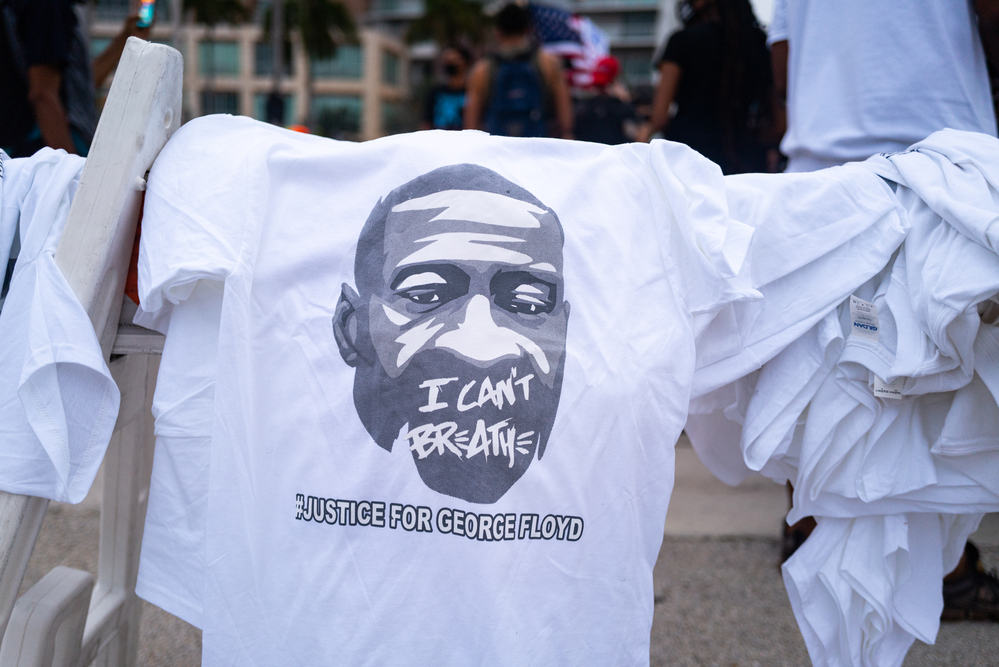A new study published in the American Psychologist interrogates how familial socialization involving colorblindness, passivity, and fragility make up critical components of Whiteness and perpetuate US-based racism.
The authors, led by Gail Ferguson at the University of Minnesota, illustrate how the Black Lives Matter movement shifts engagement with U.S. racism for many white parents. The study shares findings from a mixed-method study of 392 White mothers in the months following the May 2020 killing of unarmed Black resident George Floyd and emphasize what the authors refer to as an underlying ‘Whiteness pandemic.’
“Color-evasion and power-evasion—the central pathogens of the Whiteness pandemic—are inexorably transmitted within families. White parents serve as carriers to their children of this colorblind racial ideology unless they take active preventative measures rooted in antiracism and equity-promotion.”

After the killing of George Floyd in May 2020 and countless other Black lives at the hands of police, and amidst the COVID-19 pandemic, the Centers for Disease Control and Prevention (CDC) declared U.S. racism to be an epidemic. The Black Lives Matter movement (BLM) has seen a resurgent push for change in anti-Black racism, and of primary concern has been police killings of unarmed Black individuals, which is one of the leading causes of death for African Americans and other men of color between 25 and 35 years old.
Given approximately 15 to 26 million Americans participated in BLM protests in June 2020, and 95% of these protests were in majority White counties, the authors address a gap in the research focusing on how White parents go about this racial reckoning, specifically interrogating Whiteness socialization.
The authors utilize the framework of White racial identity theory foregrounded by Janet Helms to uncover key elements of Whiteness socialization. Helms’s model of White racial identity describes two broad, sequenced phases consisting of (a) internalized racism and (b) abandonment of racism.
Internalized racism is characterized by obliviousness or denial of race (i.e., color-evasion/colorblindness), explicit bias against Blacks or White, or ambivalent awareness of racism but without anti-racist efforts. The abandonment of racism is characterized by full awareness of systemic racism and one’s own racial privilege, as well as acknowledgment of one’s role in the perpetuations of racism, and a commitment to self-reflection and other anti-racist actions to dismantle racism. To counter colorblind racial ideology, the authors argue:
“To rectify the frequent invisibility of Whiteness in discussions of racism and to make progress toward racial equality, it is first necessary to unveil, define, and challenge the normative assumptions and practices of Whiteness.”
Whiteness is about culture rather than biology. As such, the culture of Whiteness entails both overt and subliminal socialization processes as well as power structures, laws, privileges, and life experiences that favor the White racial group over all others. Colorblind racial ideology is considered the socialization of White individuals to stop seeing race altogether, including one’s own, and the belief that every individual has equal opportunities and protections in U.S. society.
With the colorblind racial ideology framework, the authors argue that Whiteness, like racism, can be considered a behavioral pandemic given the spread of White Supremacy in the U.S. and since patterns of colorblind racial ideology have been identified as central mechanisms of Whiteness. Further, these cultural-behavioral patterns spread through both personal transmission within White families and within society at large.
A 2018 study with over 1 million U.S. adults found that explicit and implicit racial bias decreased during high points of BLM between 2009 and 2019. Given this, the authors consider it possible that BLM events are moving White individuals into Helm’s phase 2 of White racial identity, including in their parenting practices. Racial-ethnical socialization includes the mechanisms through which parents transmit information, values, and perspectives about race and ethnicity to their children, which has the potential to shape how the next generation will respond to racial injustice.
The authors write:
“Unlike racial and ethnic minority families, White families rarely engage in explicit forms of racial socialization and, when they do, they often transmit color-evasive and power evasive messages characteristic of less advanced WRID.”
The process of racial socialization is known to begin early in development. Research shows that 3-month-old children are aware of racial differences and that by age 3, they begin to internalize implicit biases and racial stereotypes from their social environments. Extant research has shown the importance of discussing race with children, but some White parents fear that explicit conversations about racism or their child’s White racial identity will engender racial bias; however, conversations about race and racial identity are essential for contextualizing the racial stimuli to which children are already attuned.
The current undertaking consisted of a mixed-methods case study of Whiteness socialization in Minneapolis in the months following George Floyd’s murder, utilizing Helms’s theory of White racial identity development as a guiding framework. The study used a convergent design wherein qualitative and quantitative data were collected simultaneously using open-ended and closed-ended questions in an online questionnaire. Analyses were conducted separately for the qualitative and quantitative data, and then results were compared, contrasted, and synthesized in the Discussion.
The sample included 392 mono-ethnically White mothers living in Minnesota. The average family income was $125,000 to $149,000, and the sample was highly educated (91% held a bachelor’s degree or higher), and 61% identified as fairly liberal. Qualitative questions were two open-ended, nonleading question prompts about “current events.” Due to the severity, proximity, publicity, and community impact of Floyd’s murder (including emergency text notices of protest-related curfews), the researchers concluded it would have been virtually impossible for any participants in the sample to have been unaware of this significant race-related event.
The quantitative portion of the study included questions about their orientation toward multiculturalism, their sense of ethnic/racial group defensiveness, and a measure of participants’ psychological distress and pandemic-related stress.
Thematic analysis yielded 20 themes within four predetermined domains of Whiteness Socialization: beliefs/values, attitudes, practices, and emotions. Example themes included racism, BLM, privilege, parenting values, blame, exposure, and racial socialization.
The triangulated findings aligned with that of the White racial identity theory. Racially silent participants (i.e., no mention of George Floyd’s murder or subsequent events) were significantly less oriented toward multiculturalism. These findings demonstrated the widespread presence of colorblind racial ideology in White mothers as the majority of the sample was either completely silent on race, Floyd, and community events after his murder, or were racially responsive in ways that did not recognize the systemic nature of racism, White privilege, mention of BLM, of value proactive parenting to handle racial stimuli.
On the other hand, mothers who displayed more sophisticated White racial identity development (17%) who also embraced multiculturalism more fully and felt less defensiveness towards their own White identity, displayed grief, concern, and hope, and discussed Floyd’s murder and BLM with their children using color-conscious and power-conscious parenting. In closing, the authors suggest:
“Resisting the dominant practices of Whiteness will require researchers, educators, and parents to engage in difficult conversations and improve the racial-ethnic socialization of White children. Proactively engaging White individuals in discussions about racism could help them think more introspectively about the topic (e.g., understand their own privilege or complicity in racism) and perhaps prepare them for future difficult conversations around such topics as police brutality by raising their racial stamina.”
****
Ferguson, G. M., Eales, L., Gillespie, S., & Leneman, K. (2022). The whiteness pandemic behind the racism pandemic: Familial whiteness socialization in Minneapolis following # GeorgeFloyd’s murder. American Psychologist, 77(3), 344–361. https://doi.org/10.1037/amp0000874 (Link)















Removed for moderation.
Report comment
Removed for moderation.
Report comment
Removed for moderation.
Report comment